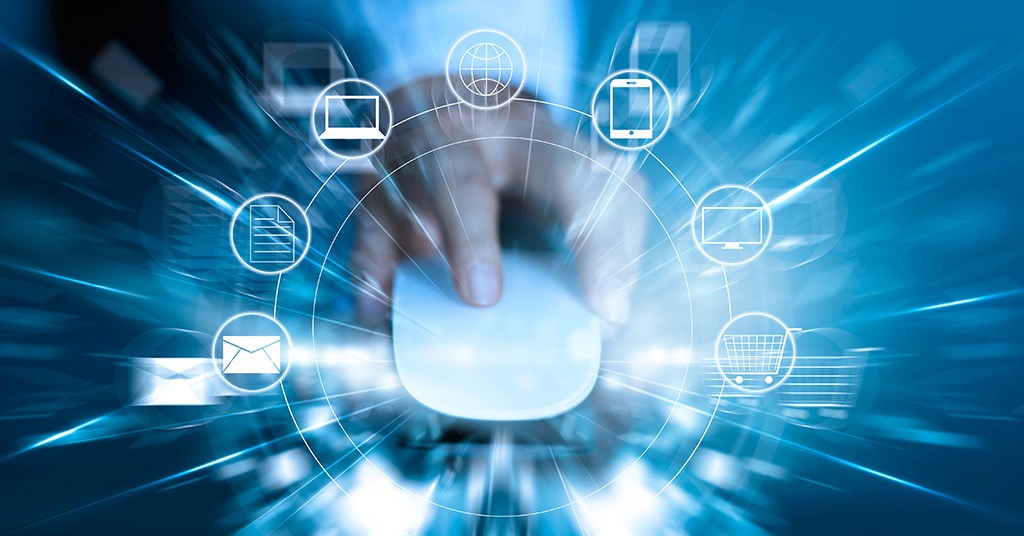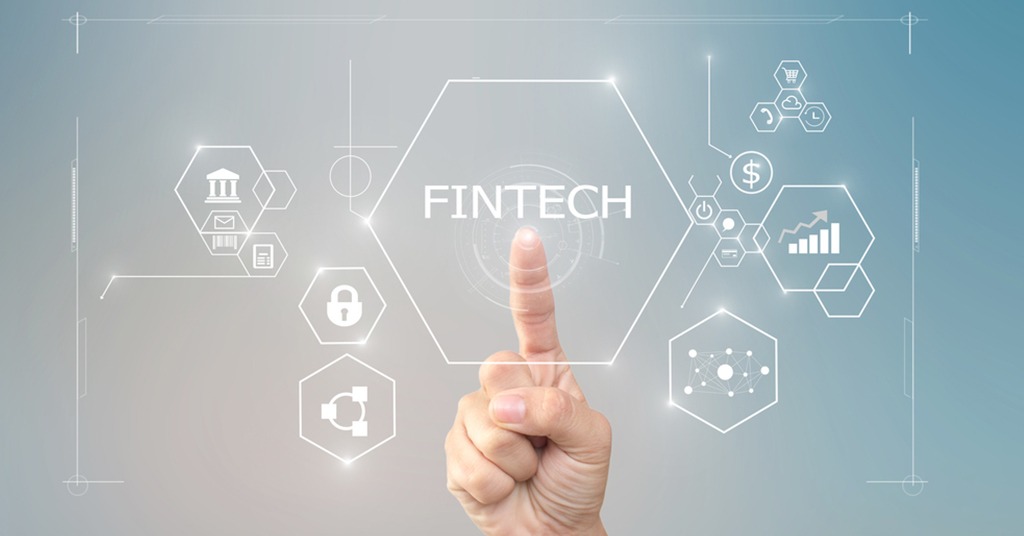 Anastasiya Shevchenko
Anastasiya Shevchenko
Author of the “Digital Era”
Founder and CEO of Fintech Solutions LLC
All our smartphones and laptops, all connected devices generate data about our habits and preferences. Every click, like, post, share, SMS and even just viewing – all this adds value to the world’s bank of information. Would you like to have a look deeper into what is Big Data?
- More than 50% of the everyday search we conduct using a smartphone,
- More than 3.7 billion people are connected to the web,
- Every second, Google processes 40,000 search queries (this exceeds 3.5 billion queries per day),
- Google accounts for 80% of all search requests in the world.
- In total, all search engines process up to 5 billion queries per day.

More than 3.7 billion people are connected to the web. Source: shutterstock.com
Let’s have a closer look at social networks’ data. According to the annual report ‘Data never sleeps 6.0’, by 2020 there will be 1.7 MB of data created every second per person on earth. It is really interesting to look at Big Data from the perspective of how much data is generated every minute (based on 2018):
- LinkedIn gains 120 new profiles;
- More than 4.3 million videos are viewed on YouTube;
- 13 million SMS messages are sent (by the way, this is almost 2 million per minute less than a year ago);
- Users post 49,480 photos on Instagram (just imagine, this network has 600 million fans, 400 million of which are active daily);
- Americans use 3,138,420 GB of online data;
- Amazon packs 1,111 parcels (during the peak load, the company packs 306 units of goods every second – which is 26 million parcels per day);
- 156 million e-mails sent.

Every day, 1.5 billion people are active on Facebook. Source: shutterstock.com
We have already started talking about social media, so I suggest looking more closely at the data of the world’s largest network – Facebook:
- Every day, 1.5 billion people are active on Facebook. 307 million of them are Europeans.
- 5 new profiles are created every second on the network.
- 300 million photos uploaded daily.
- Every minute people post here 510,000 comments and 293,000 status updates.
Now it’s obvious how big is Big Data. Big Data is all the information that is generated from all connected devices – such data can be structured and not structured, and you can process it using algorithms to get valuable information. You have probably already heard the fact that over the past 2 years, 90% of all data in the world has been generated. Just imagine, in the world, about 2.5 quintillion bytes of data are generated every day.
Digital truth serum

Internet – digital truth serum. Source: shutterstock.com
A lot of incredible facts about Big Data you can find in the bestseller “Everybody Lies: Big Data, New Data, and What the Internet Can Tell Us About Who We Really Are”, written by former Google analyst Seth Stephens-Davidowitz. Here are my top 7 bullet points from the book:
- Making our search in Internet, we ourselves are the source of the most reliable information. When and where we look for facts, quotes, jokes, places, people, things or help, can tell a lot more about our real thoughts, desires, fears and deeds than you can imagine.
- In order to come to the right conclusions, you won’t need tons of information. It is important to remember that we lie to friends, lovers, doctors, surveys and ourselves.
- The most important thing when working with big data is the ability to ask the right questions.
- Decisions might be taken intuitively. Nevertheless more data will give greater clarity. In addition, we often draw conclusions based on our experience and we tend to exaggerate its value.
- The revolutionary essence of big data is not to collect more and more information, but to collect only the necessary information.
- Everyone lies to everyone, including themselves in about 30% of cases, because of a strong desire to make a good impression. Most probably this was the main reason why the poll failed to predict Trump’s victory in 2016. Still, Google knows the truth – porn is searched more often than the weather.
- Internet – digital truth serum. Using this logic, Facebook is antiserum.
Big Data in use cases – 5 profitable ideas for business

Big Data became the advantage of Fintech startups. Source: shutterstock.com
Big Data became the advantage of Fintech startups. This has no logic behind as large corporations have an extensive customer base, and therefore access to information. But in reality, startups are those who benefit from the big data analysis.
Working with data in a proper way gives an advantage of benefiting from predictive analytics. This means that fintech-startups can assess the creditworthiness of the client fast and nearly real-time. This is what stimulates the growth of P2P lending platforms. Big data analysis allows you to quickly determine the chances of repayment of loans, and at the same time to make decisions quickly and convenient for users. Unexpectedly, despite the deep distrust to the banking system, people would rather prefer (46% of respondents) to get advice and better service from their bank than from an advanced innovative fintech startup. Unfortunately, banks still rely more on research results rather than real-time data.

Big data analysis allows you to quickly determine the chances of repayment of loans. Source: shutterstock.com
I am sure that in the near future public financial data of the companies will help them to get better financial conditions.
The fact that Big Data = Big Money is supported with numbers. Thanks to artificial intelligence and processing of big data, banks will be able to check documents, information and improve processes. One of the greatest examples is the COIN program (from Contract Intelligence) by JP Morgan. The program reviewed 12,000 loan agreements for a few seconds. Previously, bank employees would need 360,000 hours to verify the same number of contracts.
#1 Idea. Sentiment analytics
Constant communication in social networks – when users discuss, like, criticize products, brands, services gives a great background for sentiment analytics. Conducting a quick analysis of opinions, you can understand what products or companies are liked or disliked by the users. The reasons behind the sentiments have the same importance.
For monitoring, it is important to pay attention to the opinions, feelings, and attitudes towards the product or brand. If you use the right tool for analysis, you can also identify the most influential users whose opinion is important to the community in social networks. Feedbacks and users’ reviews will help to improve the product or improve service.

BBVA constantly analyzes data on social networks to set up its marketing campaigns. Source: shutterstock.com
For example, BBVA, working with a database of 47 million users in more than 30 countries, constantly analyzes data on social networks to set up its marketing campaigns. When Ford needed to win back the lost car market, marketers identified the 100 most influential bloggers and launched a campaign with them. As part of the campaign, each blogger was given a car and a mission was defined. As a result, there was a lot of fuss and PR around the Ford Fiesta for much less money compared to the marketing budget if they would spend it on TV ads.
Starbucks is generally a pioneer in working with opinion leaders – all its marketing campaigns are built using the “word of mouth” principle and customers generously share their ideas with the brand on the portal mystarbucksideas.com.

Starbucks is generally a pioneer in working with opinion leaders. Source: alizila.com
An example of the reaction and improvement of the product based on customer reviews from Barclays Bank: Having launched a mobile application, the bank faced a lot of negative feedbacks due to the fact that in the application the users aged under 18, were not able to receive and send money. The bank promptly added access and functionality for 16- and 17-year-old clients. In a similar example, Dell, while analyzing reviews on its newly presented to the public laptop, “heard” that overheating is a common problem. The company immediately focused on fixing the problem.
#2 Idea – Know your customer 360°
Clients experiences together with their decisions and actions can tell a lot about future actions. Habits of a person – to make purchases, while traveling, and so on – form a complete picture of his lifestyle. When you have a good knowledge of your customer profiles, you can make the most individualized offers for them. Big data will help not only to understand how a customer actually perceives your product, but also to predict a drop in customer interest or even to “feel” when the client is about to leave for your competitor.

Clients experiences together with their decisions and actions can tell a lot about future actions. Source: shutterstock.com
For example, HDFC knows the lifecycle of its clients and within targeted messaging pushes users to activate a credit card for upcoming suitable events. As a result, the activation of credit cards increased and the cost of attracting new customers decreased.
The British company HMV has long ago learned that customers do not open most of the letters within the mass mailing. Therefore, after working with the clients’ data, they started sending personalized recommendations to customers and more than 70% of users opened their letters on their mobile phones, around 50% of the letters were opened on a PC.
American Express company has built its predictive models based on historical customer data. In these models, 115 variables are used to predict customer churn. As a result, the company can identify about 24% of accounts that are likely to be closed in the next 4 months. And of course, this knowledge will be used to prevent customer churn.

American Express company has built its predictive models based on historical customer data. Source: shutterstock.com
Using similar predictive models helped Tatra Bank in Slovakia reduce the outflow of their credit cards customers by 30%. This is a significant result.
It might look so simple to send a welcome message to new customers, encouraging and stimulating letter to existing customers who have been with you for a long time, and thank-you-letters to those users who have just used the service or product. However, a lot of companies still do not use even these simple tools.
#3 Idea – Segmentation

We always segment our customers, but analyzing big data we can see completely new segments. Source: in.linkedin.com
We always segment our customers, but analyzing big data we can see completely new segments. By grouping customers in a different way, we can more accurately know which characteristics of our products are most important for different customers. We can significantly increase the activity of cards usage by offering customers personalized loyalty programs or cashbacks if we are well aware of their preferences. Imagine that you can find out how much customers of different groups are willing to pay for your product – this is a serious change in your pricing policy.
Using big data analytics, Bank of America changed their marketing message from “Use the value of your home to send your kids to school” to “Use the value of your home to do what you always wanted to do”. I don’t know what exactly the bank customers always wanted to do, but the conversion rates increased 10 times.

Using big data analytics, Bank of America changed their marketing message. Source: shutterstock.com
Pricing strategies of companies such as Ryanair and Etihad are built on algorithms that segment customers and analyze customer willingness to pay a particular price.
#4 Idea – Next best offer
This case is based on predicting what kind of purchase your client will make in the near future. Forecasting properly what and when to offer to your client boosts your sales. It is an art of big data analysis to find out which service or product is most suitable for your users in a bundled solution or as an additional service.
The most vivid and understandable example is from Tesco. Whenever the young dad buys diapers, he will be emailed a coupon for children’s toys offer and, most importantly, for a beer. Because the supermarket chain knows that now young dad spends less time with his friends in the pub, and he really needs to relax at home.

The most vivid and understandable example is from Tesco. Source: shutterstock.com
An excellent example from the banking world is the Australian bank Westpac. The bank carefully analyzes the propensity of its customer base for services and products. The results are impressive – about 37% of customers are buying additional products in the branch, and about 60% subscriptions for new services are coming from the call-center.
And of course, you are familiar with cross-sales from Amazon – usually, they are accompanied by the text “you might also want …” and “customers also bought…”.
#5 Idea – Multichannel journey

It would be so wonderful to communicate with users in a relevant for them channel using relevant content. Source: shutterstock.com
We have to acknowledge that this is the most painful topic for bankers. We all know that the client can communicate with the bank in the branch, by phone, online, responding to advertising and blogs, and in social networks. How to make sure that every time we are keeping track of the customer journey in all channels. Multichannel and big data analysis here mean that we are better able to understand what kind of communication and in which channels the client expects from us. It would be so wonderful to communicate with users in a relevant for them channel using relevant content. Correct work with the data will help to see the funnel conversion properly within all the channels of the bank and also identify trends and patterns in a successful client journey. Thanks to the qualitative analysis of big data in all channels, we can finally answer the question of which channel is responsible for the purchase. After all, most often customers do their homework on different channels. And the channel in which the purchase is made is not necessarily the channel that helped make the purchase decision.

The channel in which the purchase is made is not necessarily the channel that helped make the purchase decision. Source: shutterstock.com
Summary
In order to compete, it is necessary to work with the data, implement this practice into the decision-making processes and build all the strategies based only on client data. Start integrating big data analytics into your operational models, even with small steps, and this will bring customers and money to you.
Anastasiya Shevchenko is also a Partner of the international marketplace for Startups and Corporations collaboration called Let’sPartner. Click here to find out more about the project.
SEE ALSO: Top 10 tech trends for 2019









